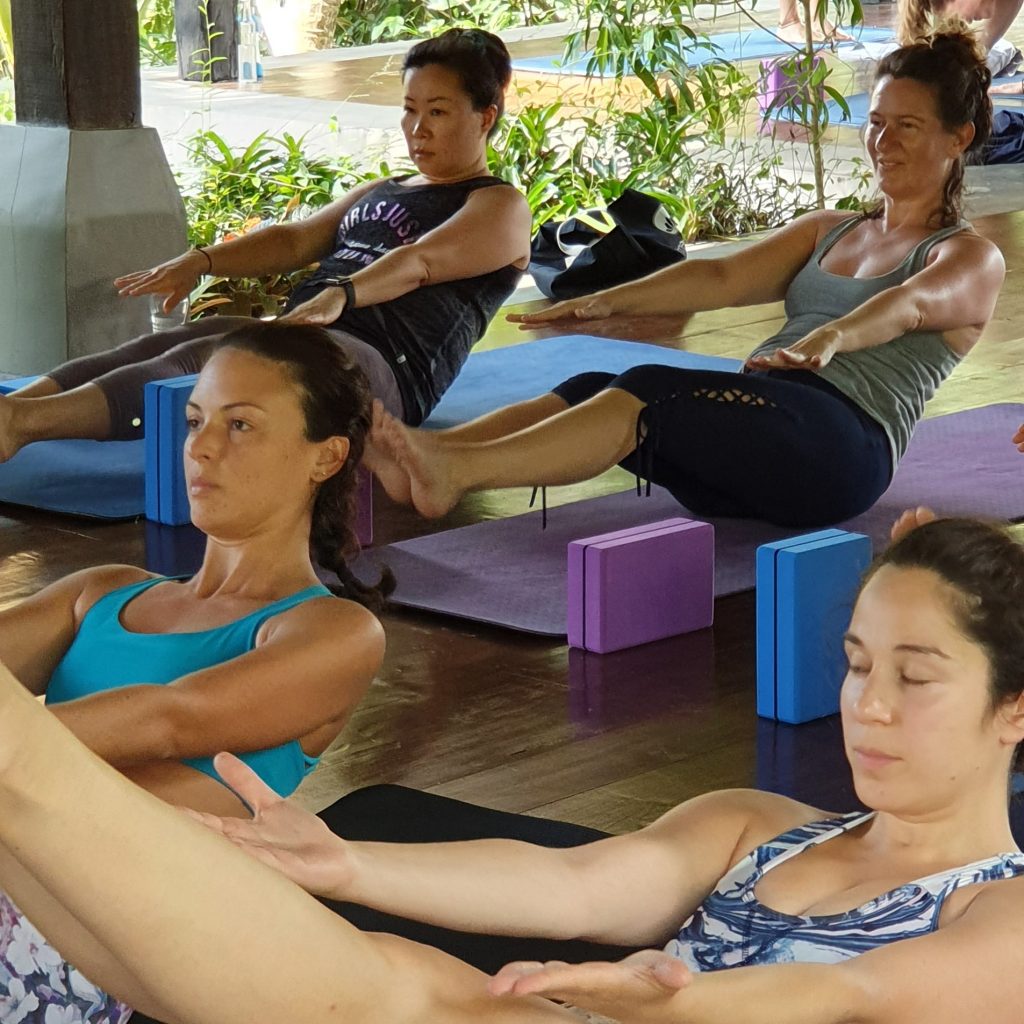It is inevitable that when you take a yoga teacher training course in Bali you will go deeper into the ancient science of chakras. You may have heard your yoga teacher talk about them in your classes. But what are they and where do they come from? Sanskrit is an ancient language rooted in India. The word chakra comes from the Sanskrit “cakra” which can be roughly translated as wheel or disk. According to yoga philosophy, there are seven chakras in the human body that are our source of spiritual energy or power. Each chakra produces energy that interacts with and influences different aspects of the body and spirit, including the physical, mental, and emotional bodies.
For thousands of years, cultures from around the world have approached well-being in a holistic way with an understanding that we are more than just our physical bodies. Indians, Chinese, and Native Americans have all understood that the mind, body, and spirit are interconnected and one aspect cannot be treated in isolation as all elements influence each other. This is a concept that modern science is only just starting to catch up with. The ancient cultures that have taken a holistic approach to health and well-being have a more complete understanding of themselves and their emotional well-being as a way to keep their physical body healthy. The chakra system is part of this approach.
The chakras lie along a vertical line in our body from the base of our spine to the crown of our head. They spin much like a vortex and support a feeling of vibrancy and health. Due to their alignment and position along the central spine, they connect the energy flow throughout the body along pathways called Nadis which support the healthy function of organs, emotions, and the various body systems.
The seven chakras, which you will learn about during your 200 hour yoga teacher training course in Bali, (you can read more about the first three in our earlier blog The First Three Chakras and their Significance), consist of the Root Chakra (Muladhara), Sacral Chakra (Svhadistana), Solar Plexus (Manipura), Heart Chakra (Anahata), Throat Chakra (Vishuddha), Third Eye (Anjna), and Crown Chakra (Sahasrara).In the yogic tradition, each of the chakras is believed to influence various emotional, physical, and energetic states of being. We can influence the chakras directly through yoga, meditation, the use of affirmations, and even diet. When wanting to cultivate a particular theme in one’s life, activating a specific chakra can be a potent way to do so.
Manipura, or the solar plexus chakra, is associated with the element of fire. It is thought to be the seat of our personal power; where we hold a deep sense of self-confidence and self-esteem. It is a source of vitality and gives us the power to overcome challenges and develop a sense of security and a desire to succeed. In chapters of life where you find yourself struggling to be assertive or feeling inadequate or like you’re a failure, the Solar Plexus chakra may be out of balance. Manipura power yoga also has an influence on the organs in the upper abdomen from the navel up to the breastbone. The organs affected are the liver, spleen, gallbladder, and pancreas. Blocks in this chakra can affect these organs in different ways. Any issues with the digestive system, metabolism, and the body’s ability to absorb, conserve, and use energy might be related to this chakra. Other areas where an imbalance might show up are weight issues, back pain, and stomach ulcers.
Inviting some practices into your life to balance and/or activate your Solar Plexus chakra may aid in reinstating a sense of personal power and confidence in your life. One of the most effective ways to activate and balance Manipura is through practicing yoga asanas. Some of the core yoga poses that you will learn in any of the best yoga teacher training in Bali, include Boat Pose (Navasana), Cobra Pose (Bhujangasana), and Sun Salutations (Surya Namaskar). All of these asanas are especially beneficial to practice when Manipura is out of balance as they specifically focus on the upper abdomen. Navasana strengthens the core and fires up the abdominal muscles, directly stimulating Manipura chakra that is located slightly above the naval. Bhujangasana creates greater mobility for the chest and lungs and allows the breath to flow more freely, allowing more energy to circulate to Manipura. Surya Namaskar, a vinyasa flow sequence characterized by a series of poses including Tadasana, plank pose, upward facing dog, and forward folds, helps energize the body and activate the Solar Plexus chakra. Further, most yoga poses that activate the abdominal muscles and are energizing in nature help activate Manipura.
Many of the best yoga teacher training in Bali will even teach you to sequence entire classes around the activation of a particular chakra along with techniques such as chakra meditations, visualizations, and personal affirmations. The color associated with Manipura is yellow so, visualizing a sun or vibrant yellow light a couple of inches above the navel can help stimulate and activate this chakra. Further, mentally repeating affirmations such as, “I navigate my life with confidence and ease”, and “I am in control of my life” can be nourishing for a Solar Plexus chakra that is out of balance. Each of these practices may be beneficial in balancing Manipura, and therefore establishing a greater sense of security, confidence, and self-assurance in your life.
Inner Yoga Training’s 200 hour yoga teacher training in Bali will provide further information on the entire chakra system and how you can establish a greater sense of balance in your life byinfluencing the chakras with yoga. The exact journey for establishing greater balance in the chakras is unique for each individual but ultimately when you understand the chakra system, theasana, meditation, and affirmation practices you learn can contribute to a greater sense of power in your life.

